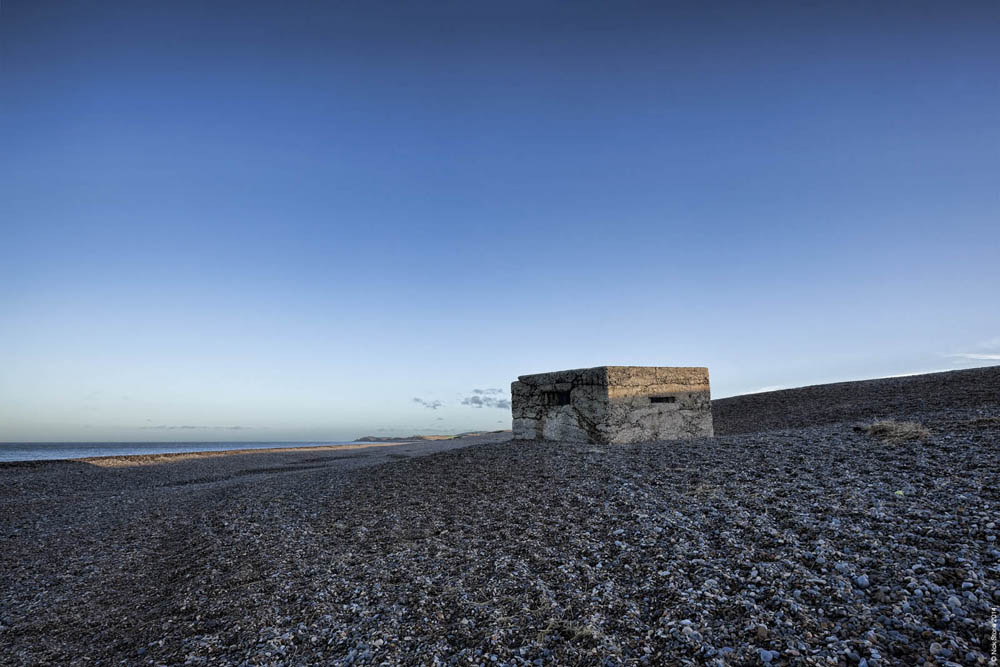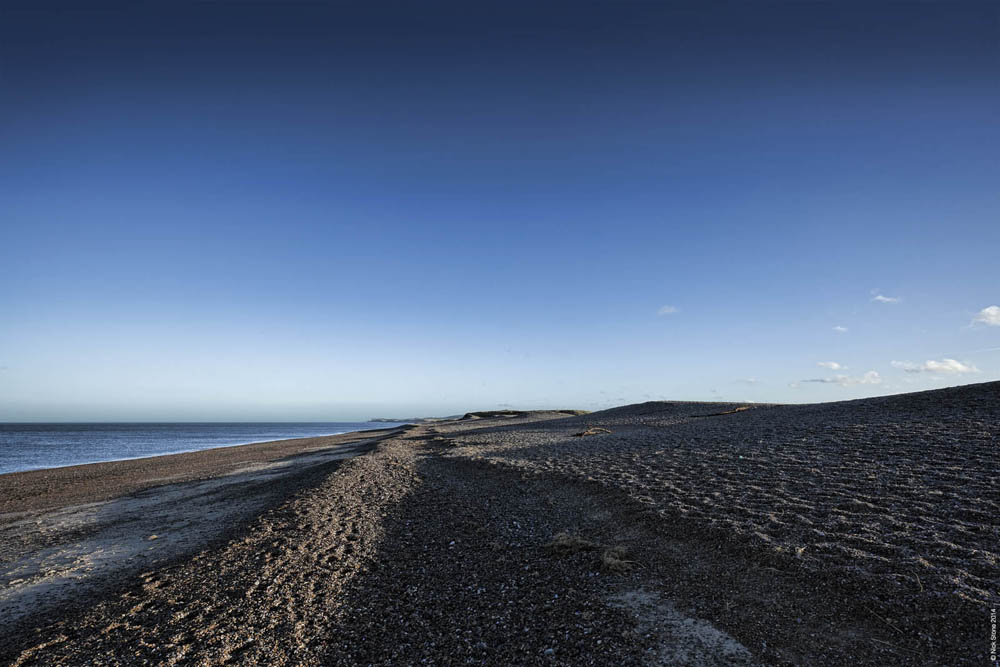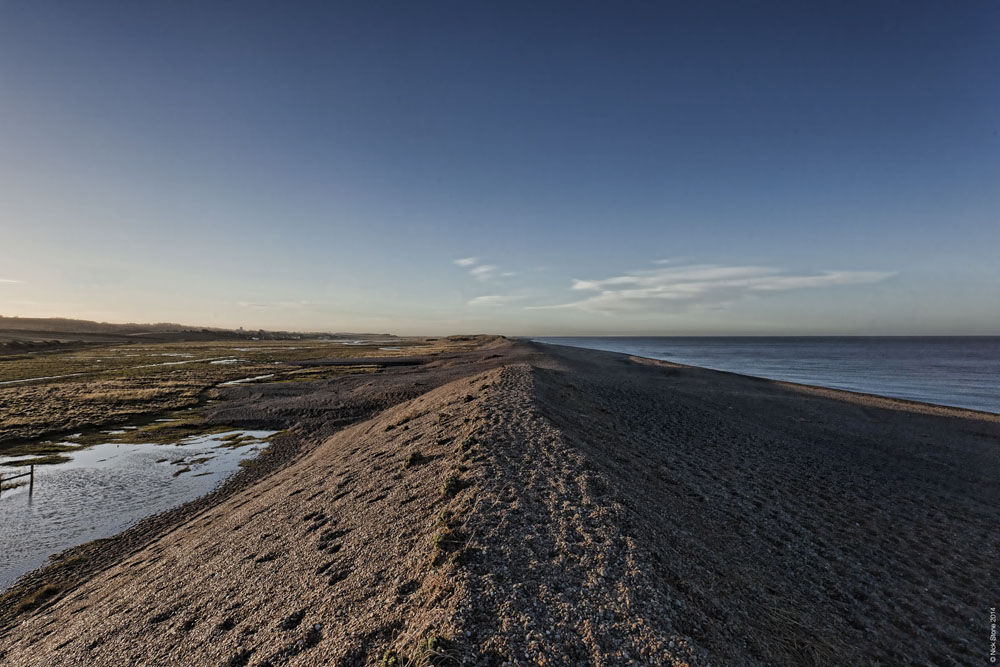Kelling and Salthouse
The weather opened up and glimmered for 24 hours in between the crushing Atlantic low we seem to have chained together coming at us at the moment, so we went for a wander along the shingle between Kelling and Salthouse, a favourite spot of ours, excluding the dog whose knees can no longer cope with the moving surface. I’ve written about and recorded this stretch of coast a fair bit and presented it on Flickr in the past; it’s an interesting bit of edge for the geologically and geographically minded and has a lot of history layered into it too, what with the huge piles of shingle deposited across the top of Norfolk by longshore drift as it’s scooped up further out from the marine beds where it was dropped at the end of the last glacial advance as the ice stopped and dropped it’s load of rock.
This piece of coast presents any invader with some very deep water ideal for anchoring up big things; launching an attack like this from foreign shores is something that has been in people’s minds since at least Tudor times, and more recently again with the build up of various anti-landing defences and pillboxes around the area, including a number of pillboxes back from the beach particularly concentrated towards Weybourne, but dotted along the whole stretch at Kelling Hard there is one survivor on the beach with slanted ruins of others buried in the shingle, cut up into slabs by the attacking power of 70 years of tides. The North Sea with its huge fetch up towards the Arctic allows nasty things to brew up; The recent surge wrought havoc along a lot of the coast, Walcott and Hemsby in particular took a battering at a human level, as did Lowestoft and Happisburgh with houses either flooded, ruined or tipped into the sea, people’s lives scattered in wash lines across the flat fields where the coast dips down below Trimingham, rising briefly again around Happisburgh before turning into soft dunes and alien rock intermittently to Great Yarmouth.
The environmental impact is still being measured, cliffs have changed; something we are very used to in Norfolk and East Anglia generally; the overlying glacial tills and boulder clays aren’t exactly the toughest substance you’ll ever put your foot in, so they tend to wear fast and even now with the armoured rock shipped from Scandinavia and dumped in shoals doesn’t really stop it being rubbed away metres at a time, hence the lost villages along the coast of Eccles and Shipden, now out to sea and teh almost armegeddon like carnage that greets you at Happisburgh nearly every time the wind blows hard in from the North or East, always a shock seeing the changes to favourite spots, most of which I’ve frequented on and off since childhood.
In the photo below you can see the old World War 2 vintage Kelling Hard pillbox on the beach, rather more proud of the surface than usual, we had to go and check it was still knocking about and see if any of the steelwork was visible from the beach defences of the same era, there are bits, but curiously not really here, which is where I remember them from years ago. There’s also a lot of extra bits on period concrete available to view further towards Salthouse and some old railway tracks which I think were probably post mounted anti-tank defences.

The beach is a bit of a mess, the large shingle berm that marks the normal high tide line is still there but it’s back edge is hollowed out, there are various huge gaps in the main shingle bank, where the breaches occurred during the surge, I think we counted five including the car park at Salthouse in places a good 5ft deep. I’d guess the bank is now a metre and half lower and where each breach occurred lower still with a tongue of shingle on the salt marsh behind.
There’s also a lot of new ‘cliffing’ further up towards Salthouse, interesting in itself as you can clearly see glacial tills sitting on top of older beach sand along with various layers of fluvio-glacial gravels, there’s also lumps of brown clay visible on bits of the beach which I suspect haven’t seen the light of day for a while as well as most odd of all, stretches of sand, not something I’m used to on this stretch of coast. Add to this the grasses and sedges which the sea sucked back over the shingle berm as it withdrew. There’s also some large bits of what appeared to be lignite, an unusual find, presumably scoured up from some coal seam on the bed of the North Sea. So it changes and what the sea takes away it will gradually put back.
…and the pillbox, well, it’s lost what was left of his brick jacket around the door and the outside is revealed to the footings with a course of brick visible along the plate it rests on, there’s structural damage to one top corner and the concrete plate over the door is missing. The inside is remarkable clear of shingle and you can get inside for the first time since forever as far as I can remember.

More east coast here on Flickr.

